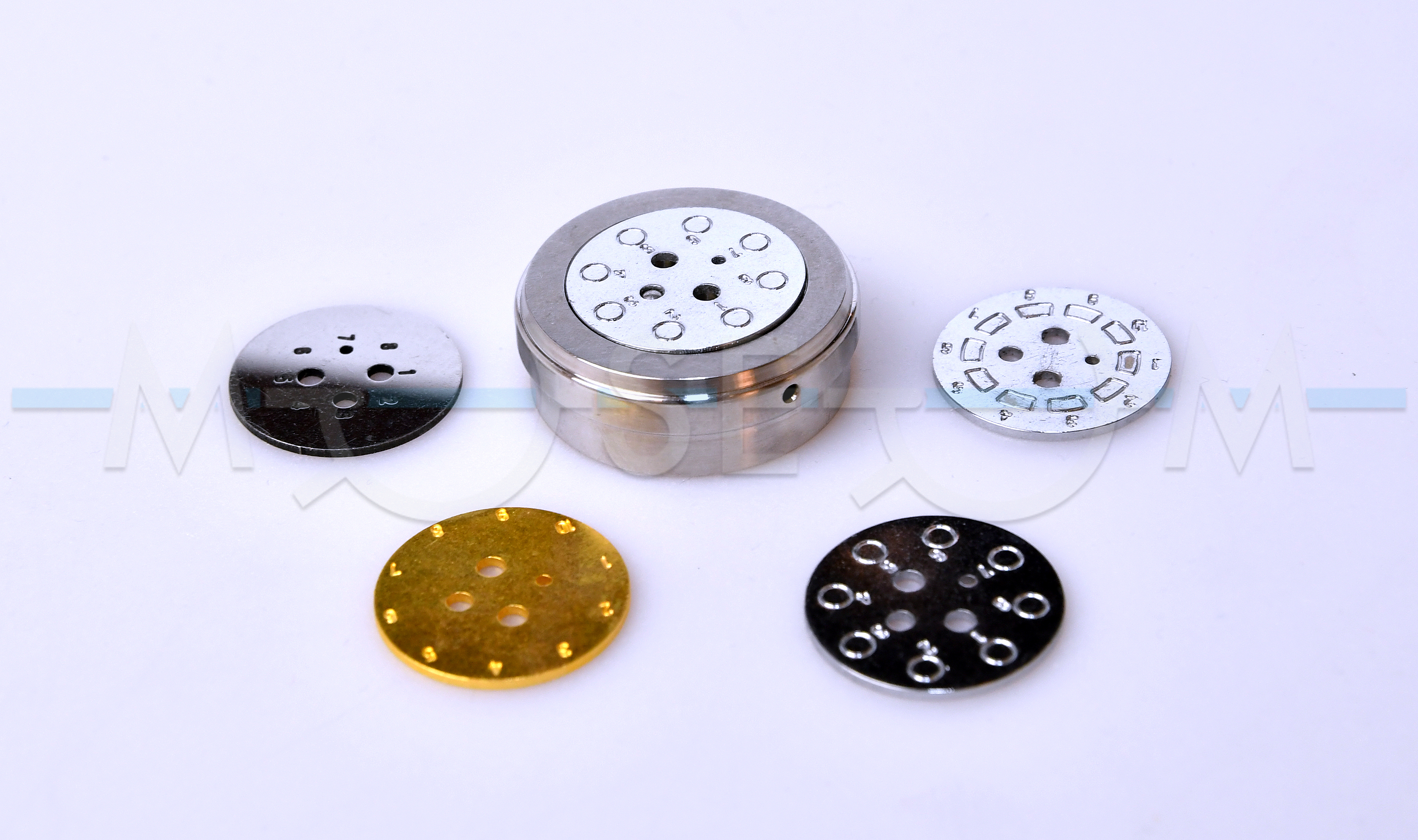Categories of exhibits
MALDI adapter & target plates
Exhibit no. 438
In MALDI-MS, the sample is first co-crystallized with an excess of a chemical known as matrix, which can absorb photons from a laser beam. The sample is prepared on a target plate, typically with multiple sample positions. After drying, the target plate with the deposits is inserted into a MALDI source and irradiated with a laser operating mostly in the UV range. The laser pulse makes the sample to desorb and the analyte molecules are ionized in the hot plume of the ablated material.
The ionization efficiency in MALDI depends on many factors including the matrix, analyte-to-matrix ratio, crystal morphology, or laser energy. Various sample preparation protocols are used to prepare crystals of desired shapes and sizes. Among other things, the target plate surface plays an important role in the complex magic of the sample preparation form MALDI. Therefore, manufacturers supply targets with differently modified surfaces, including stainless steel ground or polished, gold plated, or ultra-flat metal-plated glass targets. For instance, ground steel with a regular fine structure is recommended for the dried droplet approach, while polished steel is well suited for thin-layer preparations.
The exhibit is a set of targets for a MultiPROBE SCOUT ion source, a part of MALDI-TOF system Biflex II manufactured by Bruker Daltonics in the 1990s. After manual sample loading, the targets could be rotated around its axis. The sample selection and target movement were computer-controlled. The adapter made it possible to use these targets in a newer ion source version, the SCOUT 26.
Wikipedia: Matrix-assisted laser desorption/ionization





